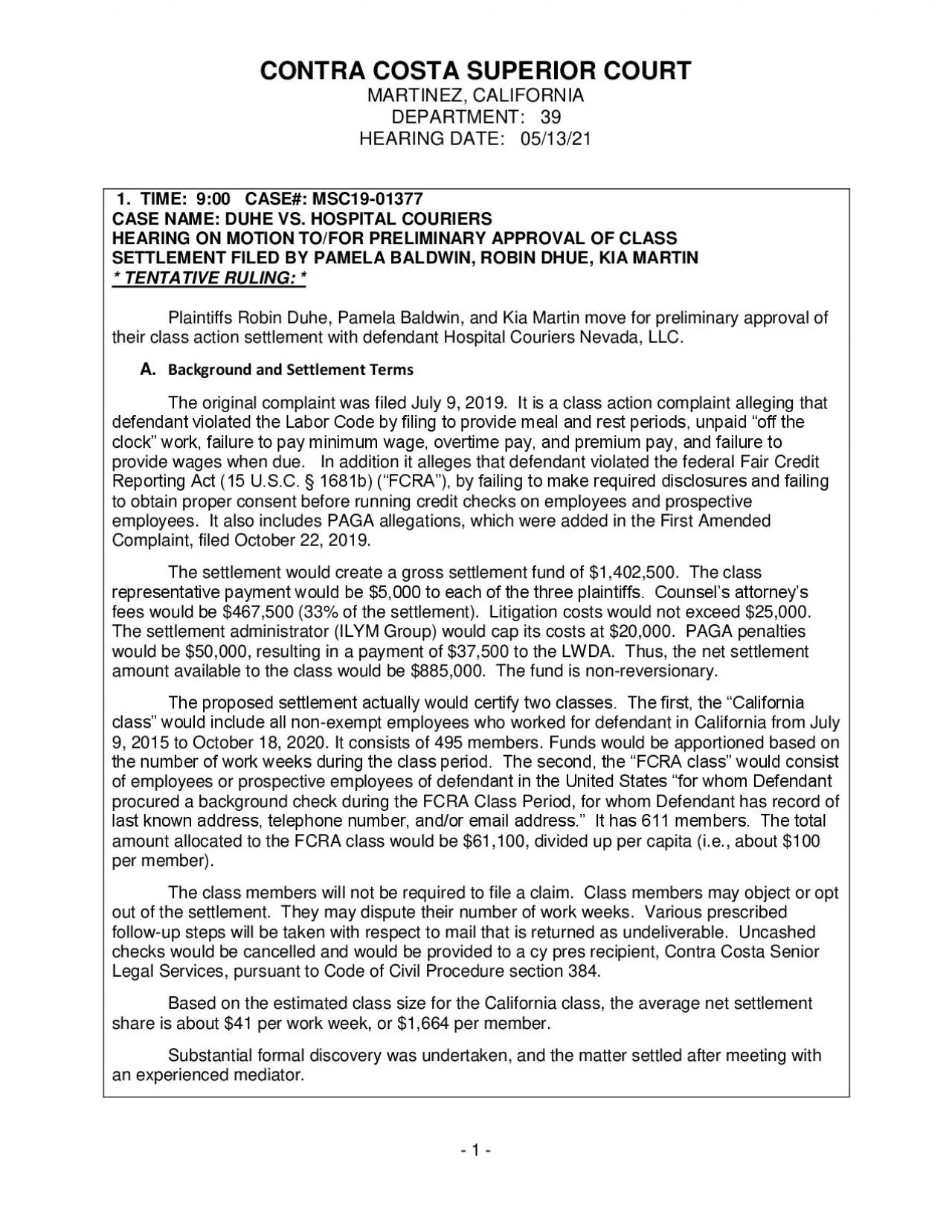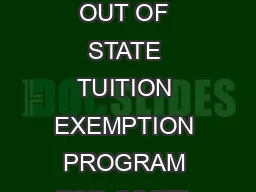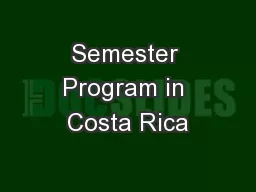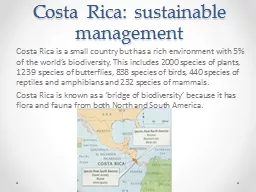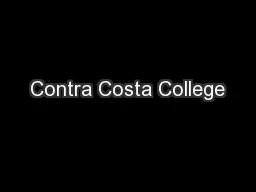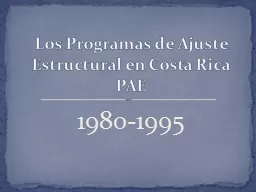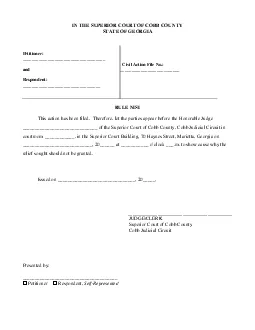PDF-CONTRA COSTA SUPERIOR COURT
Author : hadly | Published Date : 2021-09-10
MARTINEZ CALIFORNIADEPARTMENT 39HEARING DATE 05132111 TIME 900 CASE MSC1901377CASE NAME DUHE VS HOSPITAL COURIERSHEARING ON MOTION TOFOR PRELIMINARY APPROVAL OF
Presentation Embed Code
Download Presentation
Download Presentation The PPT/PDF document "CONTRA COSTA SUPERIOR COURT" is the property of its rightful owner. Permission is granted to download and print the materials on this website for personal, non-commercial use only, and to display it on your personal computer provided you do not modify the materials and that you retain all copyright notices contained in the materials. By downloading content from our website, you accept the terms of this agreement.
CONTRA COSTA SUPERIOR COURT: Transcript
Download Rules Of Document
"CONTRA COSTA SUPERIOR COURT"The content belongs to its owner. You may download and print it for personal use, without modification, and keep all copyright notices. By downloading, you agree to these terms.
Related Documents

